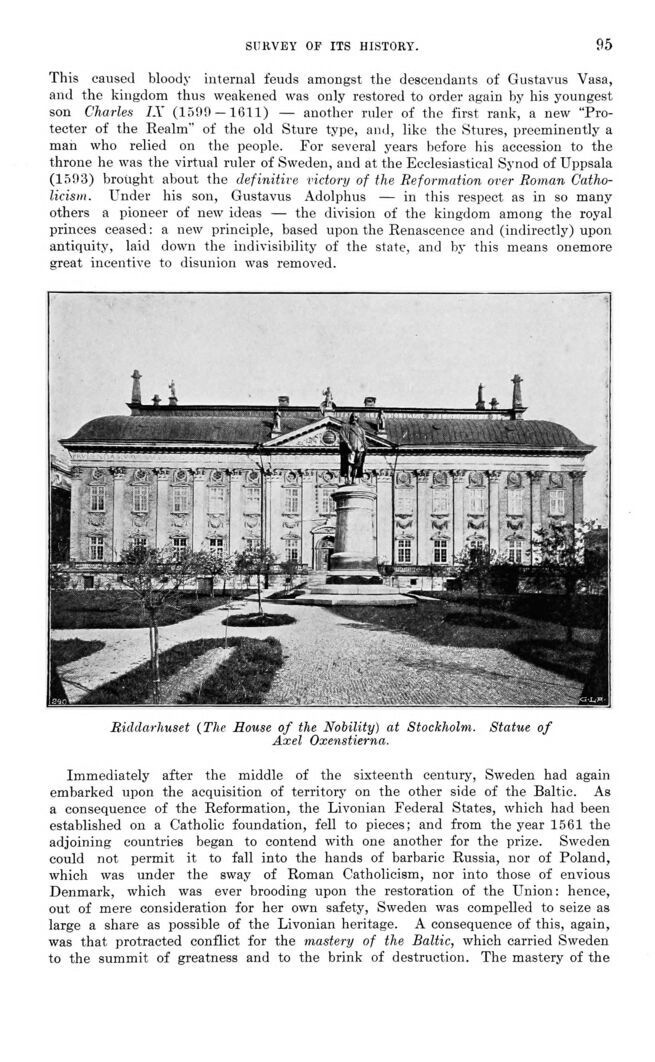
Full resolution (JPEG) - On this page / på denna sida - II. The Swedish People - 1. Survey of its History. By E. Svensén

<< prev. page << föreg. sida << >> nästa sida >> next page >>
Below is the raw OCR text
from the above scanned image.
Do you see an error? Proofread the page now!
Här nedan syns maskintolkade texten från faksimilbilden ovan.
Ser du något fel? Korrekturläs sidan nu!
This page has never been proofread. / Denna sida har aldrig korrekturlästs.
SURVEY OF ITS HISTORY. 125
S3
This caused bloody internal feuds amongst the descendants of Gustavus Vasa,
and the kingdom thus weakened was only restored to order again by his youngest
son Charles IX (1509 — 1611) — another ruler of the first rank, a new
"Pro-tecter of the Realm" of the old Sture type, and, like the Stures, preeminently a
man who relied on the people. For several years before his accession to the
throne he was the virtual ruler of Sweden, and at the Ecclesiastical Synod of Uppsala
(1593) brought about the definitive victory of the Reformation over Roman
Catholicism. Under his son, Gustavus Adolphus — in this respect as in so many
others a pioneer of new ideas — the division of the kingdom among the royal
princes ceased: a new principle, based upon the Renascence and (indirectly) upon
antiquity, laid down the indivisibility of the state, and by this means onemore
great incentive to disunion was removed.
Riddarhuset (The House of the Nobility) at Stockholm. Statue of
Axel Oxenstierna.
Immediately after the middle of the sixteenth century, Sweden had again
embarked upon the acquisition of territory on the other side of the Baltic. As
a consequence of the Reformation, the Livonian Federal States, which had been
established on a Catholic foundation, fell to pieces; and from the year 1561 the
adjoining countries began to contend with one another for the prize. Sweden
could not permit it to fall into the hands of barbaric Russia, nor of Poland,
which was under the sway of Roman Catholicism, nor into those of envious
Denmark, which was ever brooding upon the restoration of the Union: hence,
out of mere consideration for her own safety, Sweden was compelled to seize as
large a share as possible of the Livonian heritage. A consequence of this, again,
was that protracted conflict for the mastery of the Baltic, which carried Sweden
to the summit of greatness and to the brink of destruction. The mastery of the
<< prev. page << föreg. sida << >> nästa sida >> next page >>